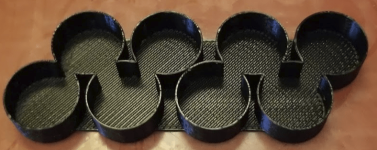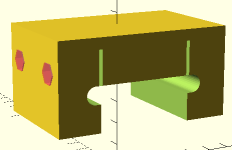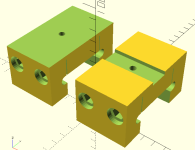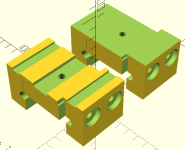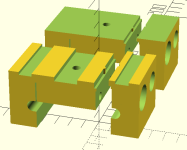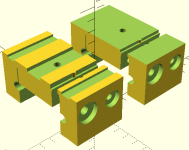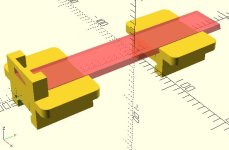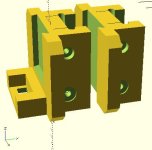Great stuff Alan! Looks like your planning this out a whole lot better than I ever did. I just kinda looked at it a few times, got a rough idea of what was possible and went for it overcoming any issues as they arose. :lol:
When I built my pack, it wasn't until it was partially assembled that I realised I should be better insulating each series group from each other. I just used a few layers of electrical tape to keep things nice and thin. Seems to have worked....I am now at over 110 cycles on my pack since it was put in the bike.
I haven't measured, but from memory the Sanyo's are 18.2mm as are most of the current cells out there these days.
I will say this, I'm glad I went with 14S not 12S as I had considered. The nature of 18650's compared to LiPo is the voltage drops a lot more a lot sooner, so the net effect is the speed drops a noticeable 10kph as the battery discharges. I actually like this as it means that the efficiency goes up as the battery is depleted meaning it has less load and the last bit of charge lasts longer. The point is, if your expecting the voltage curve of 14S 18650's to be anything like LiPo you will be disappointed. This will be even more noticeable with only 4 cells in parallel as my experience of this is from drawing the same amount of current (~25A) from 5P.
Make sure you take some photo's/video of the battery building and installation process. I'm exited to finally see someone attempt this challenge!
Cheers
When I built my pack, it wasn't until it was partially assembled that I realised I should be better insulating each series group from each other. I just used a few layers of electrical tape to keep things nice and thin. Seems to have worked....I am now at over 110 cycles on my pack since it was put in the bike.
I haven't measured, but from memory the Sanyo's are 18.2mm as are most of the current cells out there these days.
I will say this, I'm glad I went with 14S not 12S as I had considered. The nature of 18650's compared to LiPo is the voltage drops a lot more a lot sooner, so the net effect is the speed drops a noticeable 10kph as the battery discharges. I actually like this as it means that the efficiency goes up as the battery is depleted meaning it has less load and the last bit of charge lasts longer. The point is, if your expecting the voltage curve of 14S 18650's to be anything like LiPo you will be disappointed. This will be even more noticeable with only 4 cells in parallel as my experience of this is from drawing the same amount of current (~25A) from 5P.
Make sure you take some photo's/video of the battery building and installation process. I'm exited to finally see someone attempt this challenge!
Cheers


